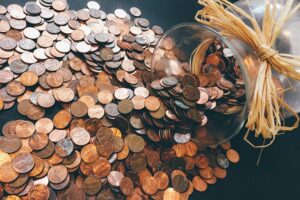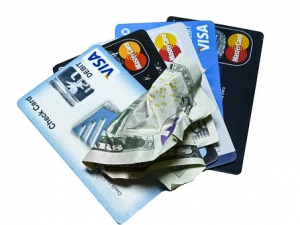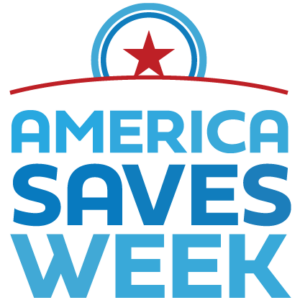 One penny, two penny, three penny…. Often paying down debt feels like an arduous process that goes on forever. It feels like all we can put down is one penny at a time, so why bother? However, we can change our mindset by thinking about paying down debt as a form of savings.
One penny, two penny, three penny…. Often paying down debt feels like an arduous process that goes on forever. It feels like all we can put down is one penny at a time, so why bother? However, we can change our mindset by thinking about paying down debt as a form of savings.
What do We Mean?
We traditionally think of saving as putting $5 into our piggy bank or contributing to our retirement account. However, if we shift our mindset on debt, we can start to see that reducing debt is one way we can “save” money. This is because if we have less debt to pay, then those are funds that can be utilized elsewhere.
Most debts or loan payments involve two parts that we refer to as the principal portion and the interest portion. The principal portion is the amount you spent (i.e. credit card purchase of $25 at Walmart) or took out as a loan (i.e. mortgage loan of $365,000). Interest is essentially the cost of “borrowing or using” someone else’s money.
For example, your monthly credit card statement shows all your purchases for that month and the total or balance owed. However, if you do not pay off your credit card each month then you would not only have the balance originally owed, plus any new month charges, but you also are now accruing interest daily on the loan balance. A mortgage would start with a total amount of principal owed and then require a corresponding interest cost on the loan depending on the length of your loan and what your interest rate is.
Every Penny Counts…
 Every penny (literally) that we pay towards the principal balance of our debt reduces the overall loan balance. This in turn also reduces the amount of interest we owe on each additional loan payment after that because the balance keeps getting smaller. The following examples showcase how additional funds paid towards the balance can affect the overall outcome of when loan balances are paid off and the corresponding reduction in interest expense to us the “consumer”.
Every penny (literally) that we pay towards the principal balance of our debt reduces the overall loan balance. This in turn also reduces the amount of interest we owe on each additional loan payment after that because the balance keeps getting smaller. The following examples showcase how additional funds paid towards the balance can affect the overall outcome of when loan balances are paid off and the corresponding reduction in interest expense to us the “consumer”.
Credit Card Example:
- Balance Owed: $500
- Payment: Monthly till paid off
- Interest: 18%
- Required Minimum Monthly Payment: $35
- If we make payments of $35/month (with no new charges) it will take 17 months to pay off the balance and will cost us $68 in interest expense.
- If we increase our payments to $50/month (with no new charges) it will take only 11 months to pay off the balance and cost us just $48 in interest expense.
Mortgage Loan Example:
- Original Loan Balance: $365,000

- Loan Payments: Monthly for 30 years
- Interest: 4.8%
- Required Monthly Payment: $1,915/month (includes principal and interest)
- If we add an extra $20/month to our payment we could pay off the loan in approximately 8 fewer monthly payments and reduce the overall interest expense paid by $8,613.
- If we add an extra $100/month to our payment we could pay off the loan in approximately 37 fewer monthly payments and reduce the overall interest expense by $38,583.
Penny Saved…
It might sound silly, but adding just a few pennies, quarters, or dollars extra to your loan balance each month will reduce the overall amount you pay on the loan and reduce the length of the loan over time. Simple changes to one’s approach to debt can increase our savings by simply making more than the minimum payment each month (even if only a few pennies more) to pay off debts sooner; examining our spending habits to make sure we are not spending more than we make each month; reducing interest on current loans by consolidating debt or reducing interest rates by working with our lenders; and using that paid off debt payment (i.e. the $25 payment you were making to the credit card) and turning around and investing or saving that money.
 America Saves
America Saves
Just like having a plan for savings is important, so is having a plan for reducing your debt. Reports show that individuals have increased their usage due to ongoing inflation and rising costs of basic needs. Check out these tips to increase your credit score from the @AmericaSaves team. #ASW2024


Great article, I love all the examples.